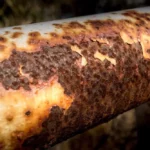Topic Content:
- Consequences of Air Pollution
- Control Measures of Air Pollution
- Evaluation Questions
Consequences of Air Pollution:
i. Carbon monoxide:
In low concentration dizziness, headache, nausea, and tiredness are caused. If inhaled for a long period even at low concentrations, it causes brain damage, at a higher concentration, it can cause unconsciousness and eventually death. It reacts with haemoglobinHaemoglobin (Hb) is a protein, found in the red blood cells, that carries oxygen in your body and gives blood its red colour. More in the blood, preventing it from taking oxygen, and forms carboxyhemoglobin, which can lead to death by suffocation.
ii. Sulphur dioxide:
It causes lung diseases in humans. It changes the green colour of plants’ leaves and corrodes metals.
iii. Nitrogen oxides:
This causes lung irritation, suffocation, disease in plants, and corrosion Corrosion is defined as a natural process that causes the transformation of pure metals into undesirable substances when they react with substances like water or air. This reaction causes damage and... More of metallic objects.
Corrosion is defined as a natural process that causes the transformation of pure metals into undesirable substances when they react with substances like water or air. This reaction causes damage and... More of metallic objects.
You are viewing an excerpt of this Topic. Subscribe Now to get Full Access to ALL this Subject's Topics and Quizzes for this Term!
Click on the button "Subscribe Now" below for Full Access!
Subscribe Now
Note: If you have Already Subscribed and you are seeing this message, it means you are logged out. Please Log In using the Login Button Below to Carry on Studying!



1a. Nitrogen dioxide
2Carbon monoxide
3Hydrogen sulphide
4Smoke
bAutomobiles
Power station
Industries
Buring of wood and vegetation for agricultural purpose
2 lt causes lung disease in human
It can causes injury to the eye,nose,ear
It can lead to death of plant and animal
It causes injury to the lung of the respiratory